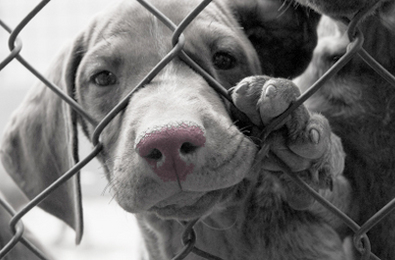Home
Welcome to Leash Love Learn Dog Training and Pet Care!
When it comes to dog training and behavior modification, we take a “wholistic” approach. Not “Holistic” in the sense of all natural, we mean “Whole” in the sense that we take a look at the whole dog in its totality, from behavior to health, exercise and nutrition. Often times one or more of these factors can be at play when it comes to behavioral issues. With a background in Veterinary Technology we approach everything from a medical standpoint and treat behavioral issues just as a doctor would treat an illness. When you’re feeling ill and go to your doctor, the doctor may run multiple tests to rule out certain illnesses and get to the root cause of problem. We follow a similar format when identifying behavioral issues and their causes and using that information to develop a treatment plan. Two dogs may present with the same behavior problem, let’s say separation anxiety. We develop our treatment plans uniquely for each specific pet. It’s not a one size fits all type of deal. Not all dogs learn the same way, we may use more than one approach to training when working with your dog. Some dog’s respond differently to different training methods, we’ll be sure to fine the right one for your pet.
Bad behavior, the number one killer of dogs?
We view bad behavior as an illness, in fact it may very well be responsible for more untimely deaths in dogs than any single disease. Bad behavior in dogs is often predictable and preventable when identified at a young age. An adult dog’s temperament and behavior habits (both good and bad) are shaped during early puppy-hood. When training and socialization has been implemented from puppy-hood it produces a confident, obedient rock solid adult dog. The issue is that by large, people don’t know to begin training in puppy-hood, often they wait too long or until a behavior problem presents itself. Picture this, someone gets a puppy. They either don’t fully train it or never got around to training it at all. It’s not exercised properly and it’s full of energy. Now it’s owner gets annoyed, so he separates to dog from everyone where it’s almost in solitary confinement. Out of boredom the dog gets more rambunctious and may chew objects, this further infuriates the owner. One day his favorite pair of shoes is chewed, in anger he grabs the dog too rough, in flight or fright mode the dog nips his hand. Now he thinks he’s got a biting dog on his hands. Next he surrenders the dog to the shelter and it’s labeled as a biting dog with a history of biting it’s owner. Not good odds for him to get adopted by a new family. Those that are deemed un-adoptable are often euthanized to make room for incoming animals. This could have all been avoided had the dog been properly trained at a young age, we advocate socialization and training beginning at 8 weeks of age.
Bad Behavior Prevention:
See our page titled “Puppy Pre-K” for information about our puppy classes. Beginning at 8 weeks to 16 weeks old is the ideal age to learn early puppy socialization skills. Our class is a combination of off leash play, off leash training and on leash training.

Here are some statistics to look over taken directly from the ASPCA website:
Facts about U.S. Animal Shelters:
There are about 13,600 community animal shelters nationwide that are independent; there is no national organization monitoring these shelters. The terms “humane society” and “SPCA” are generic; shelters using those names are not part of the ASPCA or the Humane Society of the United States. Currently, no government institution or animal organization is responsible for tabulating national statistics for the animal protection movement. These are national estimates; the figures may vary from state to state.
Approximately 7.6 million companion animals enter animal shelters nationwide every year. Of those, approximately 3.9 million are dogs and 3.4 million are cats.
Each year, approximately 2.7 million animals are euthanized (1.2 million dogs and 1.4 million cats).
Approximately 2.7 million shelter animals are adopted each year (1.4 million dogs and 1.3 million cats).
About 649,000 animals who enter shelters as strays are returned to their owners. Of those, 542,000 are dogs and only 100,000 are cats.
Of the dogs entering shelters, approximately 35% are adopted, 31% are euthanized and 26% of dogs who came in as strays are returned to their owner.
Of the cats entering shelters, approximately 37% are adopted, 41% are euthanized, and less than 5% of cats who came in as strays are returned to their owners.
About twice as many animals enter shelters as strays compared to the number that are relinquished by their owners.
According to the American Humane Association, the most common reasons why people relinquish or give away their dogs is because their place of residence does not allow pets (29%), not enough time, divorce/death and behavior issues (10% each). The most common reasons for cats are that they were not allowed in the residence (21%) and allergies (11%).
Our Mission and Goal:
It’s our mission and goal is to reduce the number of dogs entering the shelter systems. We plan to do this by preventing bad behavior from ruining the lives of dog owners and their dogs. We advocate early obedience training during puppy-hood to prevent behavior problems from developing. We want all of our clients pets to be huggable, lovable and obedient family members. We see this as a form of preventable medicine. We also supply our clients with a complimentary emergency pet tag, linked to a toll-free 24 hour hotline should their pet get lost. We also offer low cost micro-chipping to give your pet total coverage.
Email or call us for more information
LeashLoveLearn@gmail.com
917-565-3322

